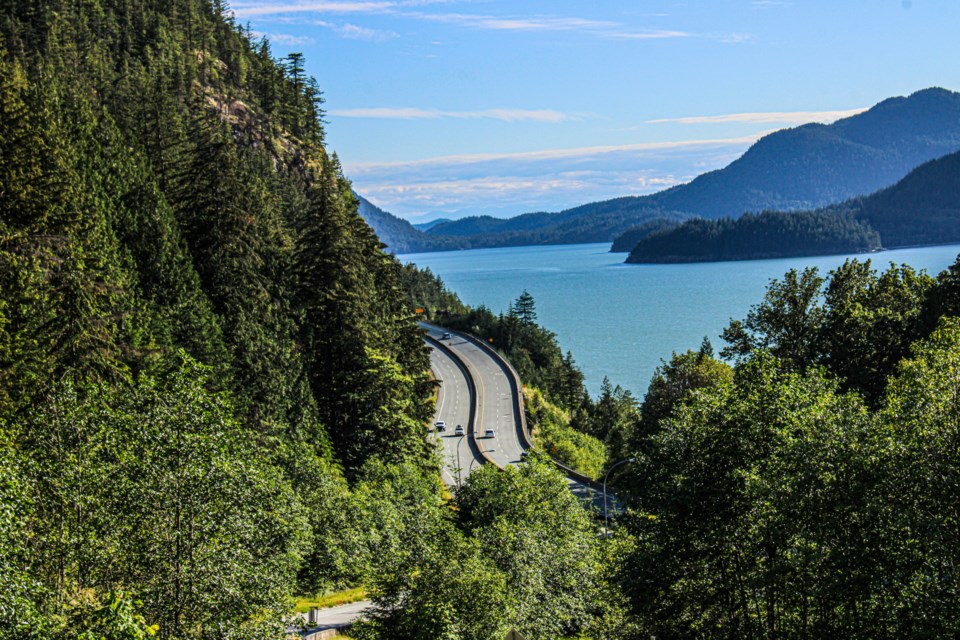How can a community balance nature, culture, and growth?
This is the question at the heart of the , a guide crafted by the to shape the future of Átl'ḵa7tsem/Howe Sound.
The plan is robust—spanning 63 pages, it maps out 21 goals designed to protect the environment, foster sustainable growth, and strengthen ties between Indigenous and non-Indigenous communities.
Nch’ú7mut (pronounced in-cho-moot) translates to “being one, unity, or to be one piece of something greater.”
“It is a living document, reflecting the changing environment of policies, plans, development and the environment,” reads the plan released by HSBRIS in May 2024.
“Biosphere regions show the world how people and nature can live together,” said Ruth Simons, executive director of the Howe Sound Biosphere Region.
With Átl'ka7tsem/Howe Sound becoming the 19th biosphere reserve in Canada in September of 2021, it joins a global network now consisting of 759 sites spread across 136 countries.
For Simons, while the framework is global, each biosphere region tailors its management plan to reflect the needs and values of the local community.
“What’s contained in the Unity Plan is really a reflection of what we’ve heard and what we see as goals that are applicable here,” she said.
According to Simons, the Nchu’ú7mut/Unity Plan has been shaped by feedback from many voices, including the Sḵwx̱wú7mesh Úxwumixw (Squamish Nation), local governments, conservation groups, and businesses.
“It’s been a long process for this plan,” said Simons.
A Nation council member, Joyce Williams, co-chairs the board responsible for the biosphere region.
The region also hosts roundtable meetings twice a year to keep conversations going. “We’ve held webinars, forums, and events to gather input. It’s an ongoing process,” Simons said.
The last roundtable was on Nov. 2, 2024, at Squamish’s Capilano University, bringing new participants to the table.
What exactly is the plan?
So, what does the plan focus on? Here’s a closer look:
1. Protecting nature
The plan aims to protect important habitats like the unique glass sponge reefs, found only in a few places worldwide. It also supports restoring damaged areas, such as the Squamish Estuary, and increasing protected lands. The goal is to have 30% of the region’s land and waters under conservation by 2030.
2. Growing sustainably
The plan promotes eco-friendly tourism and helps local businesses adopt sustainable practices. It also supports small-scale, sustainable fishing and renewable energy projects like community solar panels.
3. Acting on climate change
To address climate change, the plan includes restoring forests and wetlands to help prevent flooding and wildfires. HSBRIS is also pushing for better infrastructure, such as roads and drainage systems, to handle extreme weather.
4. Building reconciliation
The plan emphasizes working closely with the Sḵwx̱wú7mesh Úxwumixw (Squamish Nation). Indigenous knowledge is used to manage protected areas, and decision-making includes input from First Nations to ensure cultural respect and equity.
5. Involving the community
Community input is key to the plan’s success. Regular roundtable meetings, like the one on Nov. 2 at Capilano University in Squamish, give residents a chance to share their thoughts. A new online platform will soon make it easier for people to stay informed and get involved.
Progress in conservation and marine life
Simons shared some recent successes, including new conservation areas on Bowen Island and in West Vancouver.
“We have had an increase in the amount of lands that are under conservation management,” Simons said.
“For instance, as well as West Vancouver. So, I'd say some of the indicators are—that there’s more land being designated for conservation.”
Simons also sees a positive shift in marine life.
“You are continuing to see a wonderful resurgence of marine life in Howe Sound,” she said.
“Just the other day, white-sided dolphins swam into Squamish—though an orca came right after them. It’s a sign that the ecosystem is recovering,” she said.
These changes are tracked through regular reports, including a five-year review of ocean health. But there is still “a lot to do.”
Engagement and climate change challenges
Public engagement remains a significant challenge.
“I think the hardest part is probably just getting people to engage, to take the time to read,” Simons said.
“There’s so much going on, and it’s just really hard to get people’s attention to concentrate.”
The Unity Plan also addresses the interconnectedness of climate change and biodiversity loss.
“Climate change and biodiversity loss are very much connected,” she said.
“We hear a lot about climate change, extreme weather, and its impact on the environment. It’s equally important for people to understand the value of nature and how it can protect us from these changes.”
Simons stressed that better infrastructure planning is critical, given the increasing frequency of extreme weather events.
“We need to do better with planning and making decisions around infrastructure because these extreme weather events are going to keep happening,” she said.
Building reconciliation step-by-step
Reconciliation between Indigenous and non-Indigenous communities remains a priority though it is “still in the early stages.”
“It’s about starting conversations and building connections. Saturday’s roundtable was a step forward, with new people joining,” she said.
Education is another essential piece of the puzzle. “We need to get kids out on the land and weave environmental knowledge into schools and community programs,” Simons said.
Whatever challenges lie ahead, Simons is optimistic that the Nchu’ú7mut/Unity Plan can foster reconciliation between Indigenous and non-Indigenous communities. “I think it's just connecting people and [continuing] having these conversations. And learning.”
Bhagyashree Chatterjee is The СŔ¶ĘÓƵ’s Indigenous affairs reporter. This reporting beat is made possible by the.




.jpeg;w=120;h=80;mode=crop)
